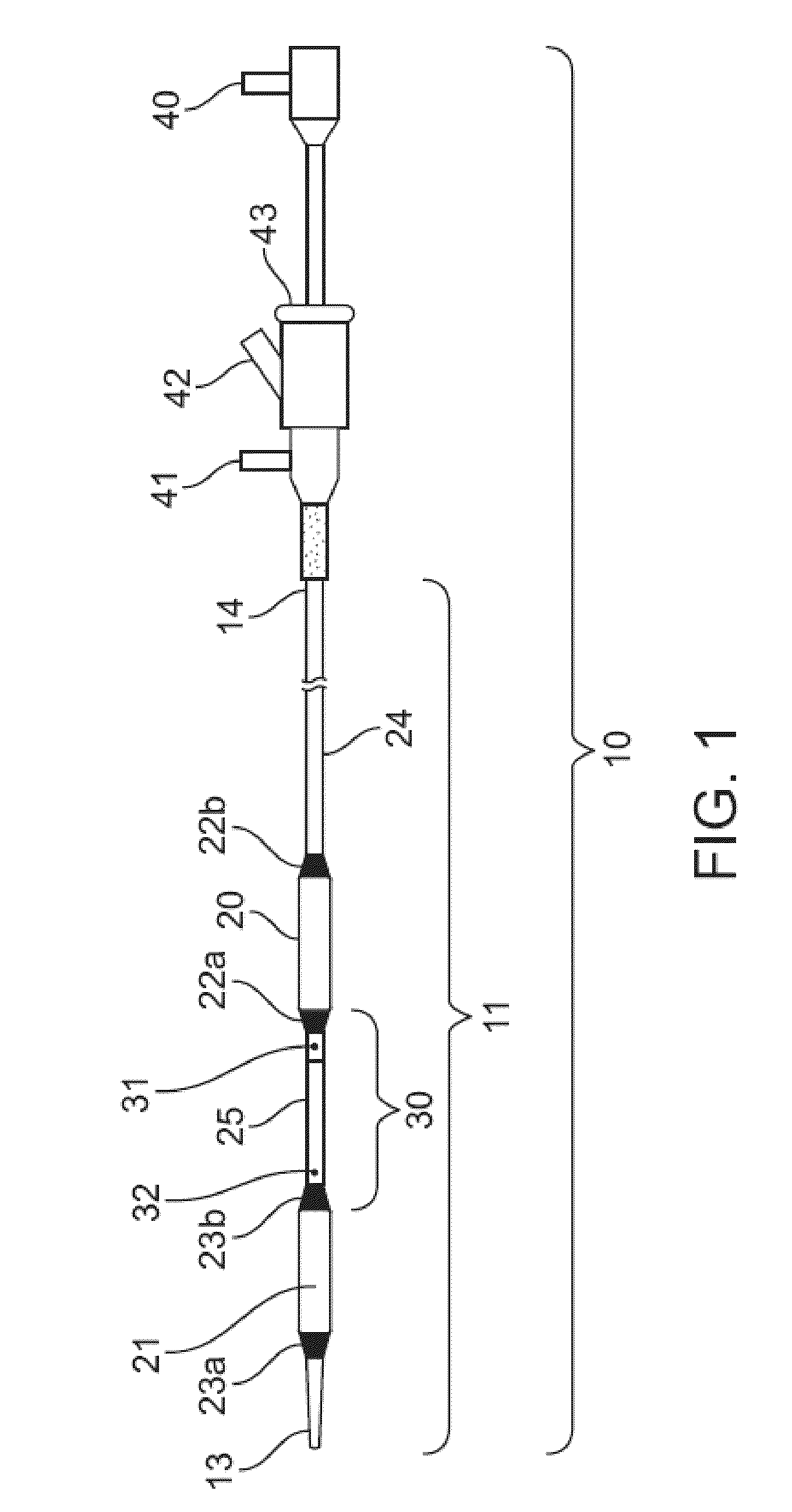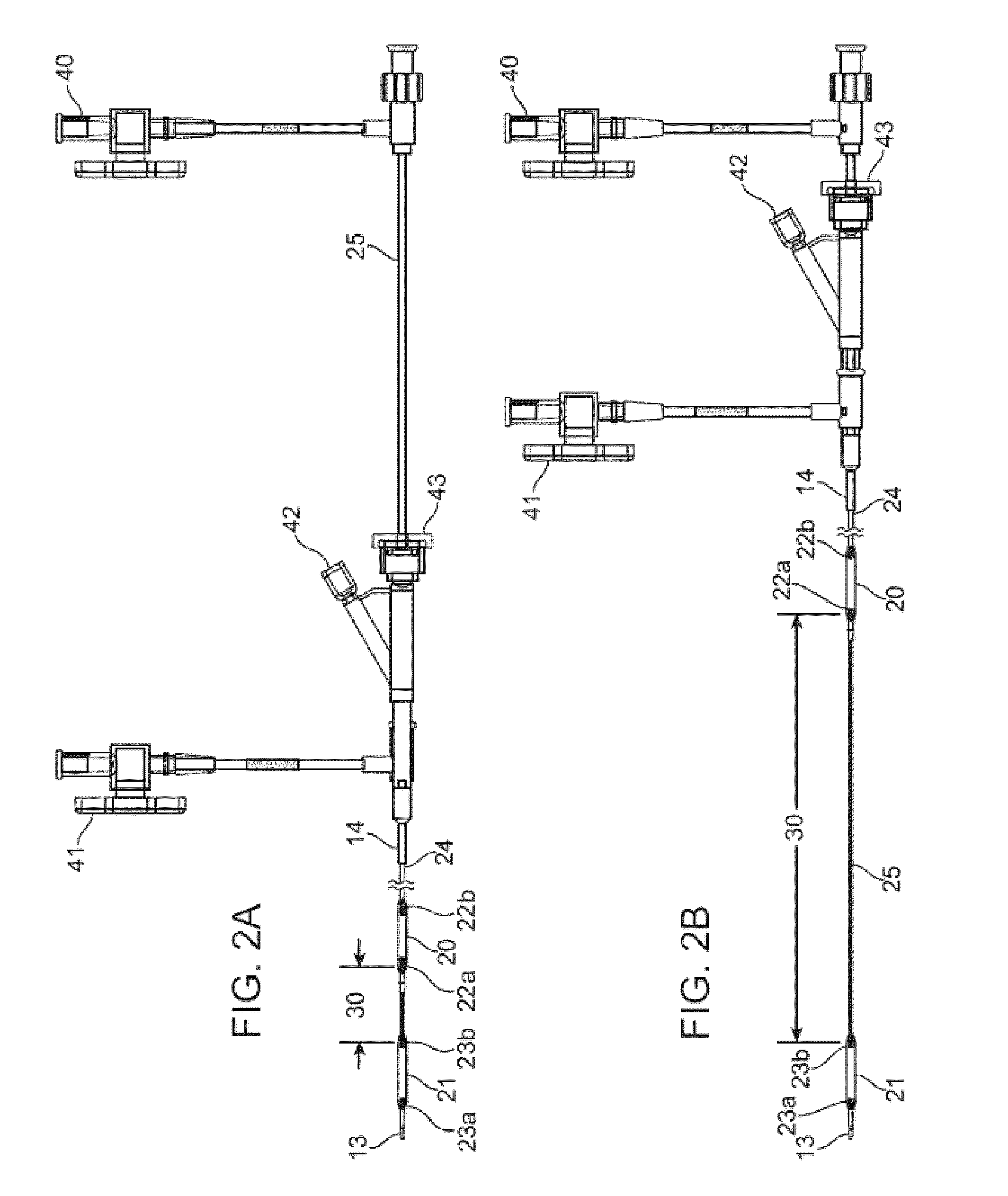Double balloon catheter and methods for homogeneous drug delivery using the same
a drug delivery and double-balloon catheter technology, applied in balloon catheters, surgery, other medical devices, etc., can solve the problems of site-specific delivery of these agents, high cost, and high cost, and achieve the effect of maximum homogeneous distribution
- Summary
- Abstract
- Description
- Claims
- Application Information
AI Technical Summary
Benefits of technology
Problems solved by technology
Method used
Image
Examples
example 1
Vascular Absorption of Paclitaxel
[0065]The double balloon catheter described herein was inserted into the iliofemoral artery of a pig while being monitored using fluoroscopic methods. The vessel was occluded by inflating the proximal balloon at which time a solution containing 25 milligrams of Abraxane® was infused. The distal balloon was inflated in a similar manner as the proximal balloon, thus forming the treatment window. After 5 minutes, the Abraxane® was washed from the treatment site by deflation of the balloons. The vessel was then allowed to wash out with circulating blood for 15 minutes. The concentration of Paclitaxel absorbed by the vessel wall was then determined. For comparison, a solution containing 80 milligrams Abraxane® was infused into the iliac artery of a pig using a direct infusion catheter and a single balloon occlusion catheter. Again, the concentration of Paclitaxel absorbed by the vessel wall was determined after 15 minutes of wash out. As exemplified graph...
example 2
Homogeneity Determination
[0066]Also included as an embodiment of the invention is an in vitro method for determining homogeneity of drug delivery. The method comprises the steps of a) placing a tubular member having a known length comprising a liquid of viscosity similar to the viscosity of blood in the path length of an optical sensor, b) delivering a dye of known concentration to the tubular member, and c) determining the concentration of dye along a length of the tubular member.
[0067]Two catheter configurations as shown in FIGS. 10 and 11, respectively, were studied to determine homogeneity of the therapeutic agent infusion upon delivery. An optical sensor was first calibrated using a series of FD&C Blue 31 dye samples of various known concentrations. A 6 mm diameter glass tube was used to simulate a blood vessel. The glass tube was mounted in the path of the optical sensor and placed in line with a peristaltic pump which circulated a solution having a viscosity matching that of ...
PUM
 Login to View More
Login to View More Abstract
Description
Claims
Application Information
 Login to View More
Login to View More - R&D
- Intellectual Property
- Life Sciences
- Materials
- Tech Scout
- Unparalleled Data Quality
- Higher Quality Content
- 60% Fewer Hallucinations
Browse by: Latest US Patents, China's latest patents, Technical Efficacy Thesaurus, Application Domain, Technology Topic, Popular Technical Reports.
© 2025 PatSnap. All rights reserved.Legal|Privacy policy|Modern Slavery Act Transparency Statement|Sitemap|About US| Contact US: help@patsnap.com



